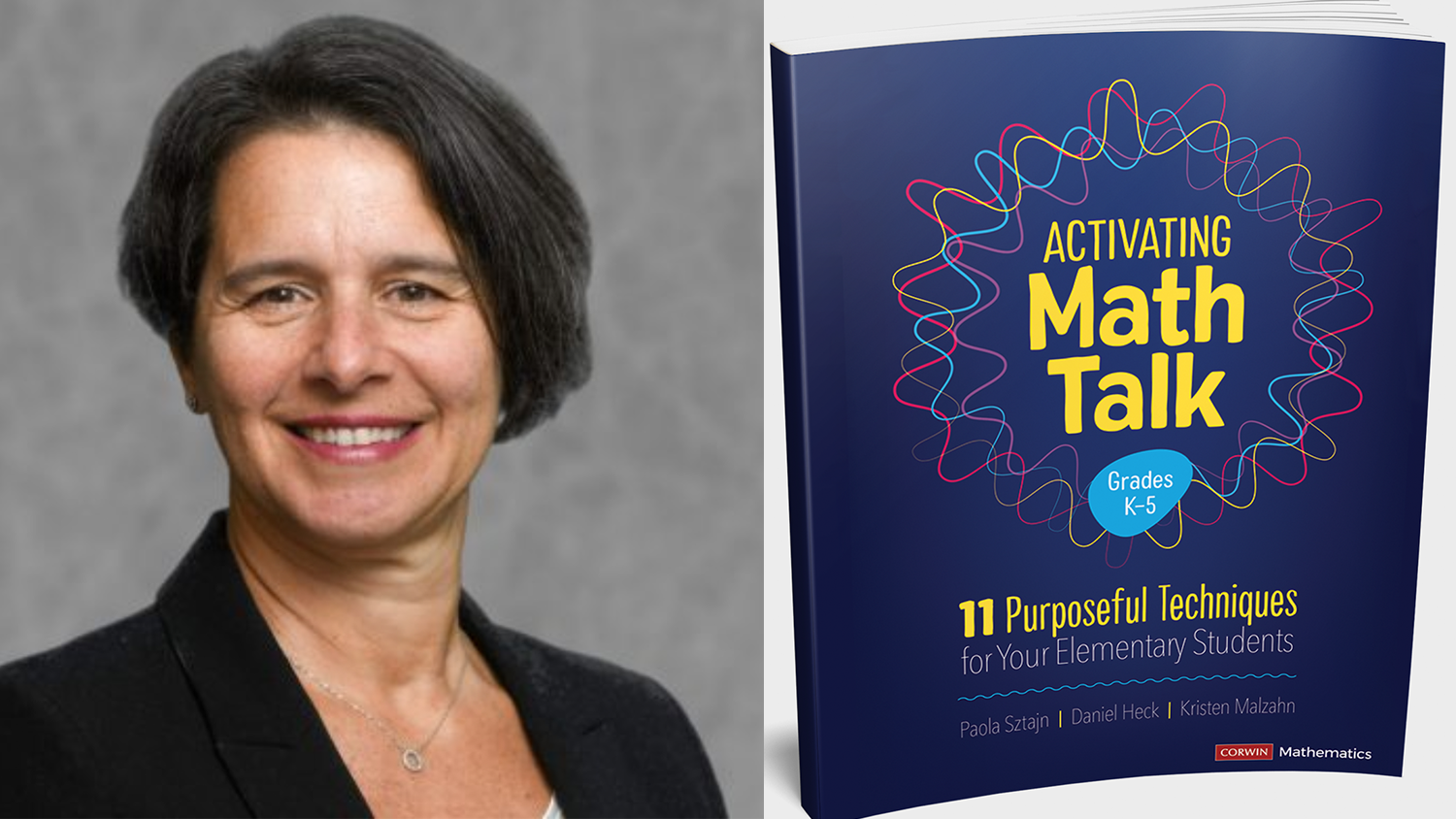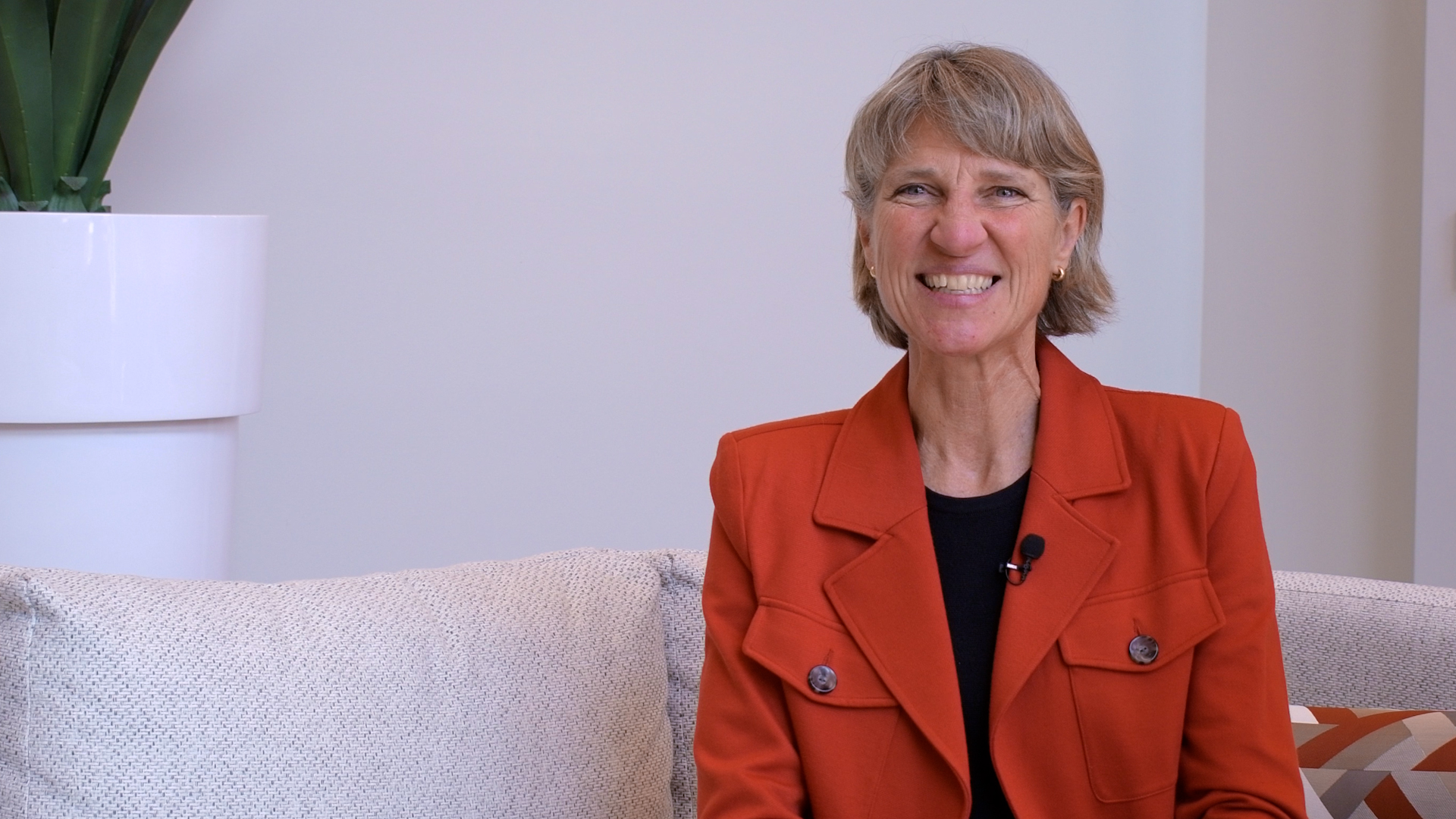Professor Paola Sztajn Helps Teachers Encourage Young Students to Engage in Mathematical Discourse Through New Book

Participation in mathematics discourse can promote mathematical understanding among elementary school students, but the ability to engage in such conversations does not come naturally to most young children. In order to help educators understand how to support and incorporate productive mathematical conversations in the classroom, NC State College of Education Professor Paola Sztajn, Ph.D., has authored a new book entitled Activating Math Talk: 11 Purposeful Techniques for Your Elementary Students.
The book, published by Corwin Press and co-authored by Daniel Heck, Ph.D., and Kristen Malzahn, Ph.D., both of Horizon Research, draws on the lessons learned and professional development materials developed through Project AIM — a professional development program that first launched in 2010 to help elementary school teachers learn to promote mathematics discourse for all learners through strategies adapted from literacy instruction.
While the materials developed for Project AIM were primarily targeted for use by K-5 math specialists, professional development facilitators and supervisors, Activating Math Talk is aimed at teachers who want to learn strategies that they can immediately use in the classroom.
“It’s really about teaching kids how to participate in productive discourse through several techniques that can actually be taken and implemented immediately,” Sztajn said. “As teachers start implementing these techniques, they can see the transformation that happens because of the new opportunities for kids to participate in discourse.”
Activating Math Talk includes classroom examples of tasks and techniques as well as vignettes written in partnership with actual teachers who implemented techniques from the book in their classrooms. In addition, there are sections dedicated to examining teacher practice and recognizing signs of successful technique implementation and problems that could arise
The book includes techniques like the use of bet lines — a literacy strategy used to help kids understand text — to help children understand word problems. Through this technique, a teacher will show a word problem one sentence at a time and ask students to share what they believe will happen next in order to engage them in thinking about the problem and what the mathematical demands might be. In addition to encouraging discussion, the strategy enables a teacher to see which students are attending to the mathematical aspects of the story in the problem and which students are attending to other aspects, such as the context of the story.
Another technique — the talk chain — encourages children to learn to listen to their classmates’ ideas by forcing them to verbally acknowledge what the student before them said before proceeding to share their own thoughts.
“Providing these techniques allows teachers to engage with productive discourse in a very controlled fashion. The goal is not for students to get really good at these techniques, but for kids to start understanding that they have to be thinking about the math,” Sztajn said. “The techniques are just steps used to learn some of the mental processes and participation formats. Eventually, children will be able to engage in mathematical discourse without using the techniques at all.”
The book positions all children as emergent mathematical communicators , but also places a focus on using discussion techniques with emergent multilingual learners. It is common that teachers may encounter students who attended schools in other countries and may understand the math, but are reluctant to participate because they don’t have the vocabulary. Similarly, teachers may have students who can express their thoughts but were previously taught a different method of finding a solution to a particular problem.
For this reason, Sztajn said it is important that educators understand their multilingual students and take time to learn about their stories, their families and the assets their different experiences bring to the classroom and mathematical discourse.
“You have to know your students and productive classroom discourse is an opportunity to learn more about them,” Sztajn said. “We are looking for ways to open up the classroom so that kids can talk and they can tell what they’re thinking and share what’s happening. Hopefully, that happens in both the mathematical realm and more broadly, so teachers can get to know their students and build from there.”
Although Activating Math Talk can be used by any individual teacher who wishes to learn the techniques, the book will also serve as a textbook for a professional development model that will be launched through NC State’s Distance and Online Learning Technology Applications (DELTA).
Districts will be able to sign up for the 30-hour program and facilitate Project AIM’s professional development course for their elementary school teachers. The program, which consists of both synchronous and asynchronous material, was originally developed as a hybrid face-to-face and online learning environment, but can be easily adapted to an online-only format, Sztajn said.
Three Takeaways from Activating Math Talk
- Children must learn to talk in specific ways during math lessons: “These ways of talking are different from how kids talk on the playground or in other subject areas. Thus, activating math talk is not just a matter of telling students to talk. Rather, participation in productive math conversations is a skill that is taught and learned.”
- Use multiple forms of communication to reach bilingual students: “Using gestures, pictures, diagrams and concrete objects, as well as multiple languages, gives students access to the math and can make the difference between students understanding a problem or lacking the chance to know what is being asked of them mathematically. Multiple modes of communication draw on students’ assets to help them think through a problem and more readily express their thinking and reasoning.”
- Promoting quality mathematics discourse takes time, practice and patience: “Activating math talk in the classroom is not an easy feat, nor does it happen overnight. It is a process that requires knowledge of high-quality math discourse and understanding of how to organize lessons and purposefully use techniques that scaffold student engagement in communicating their ideas, justifying their reasoning, listening to and questioning others’ thinking and making mathematical connections.”
- Categories:


